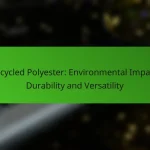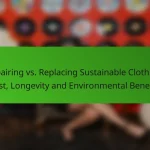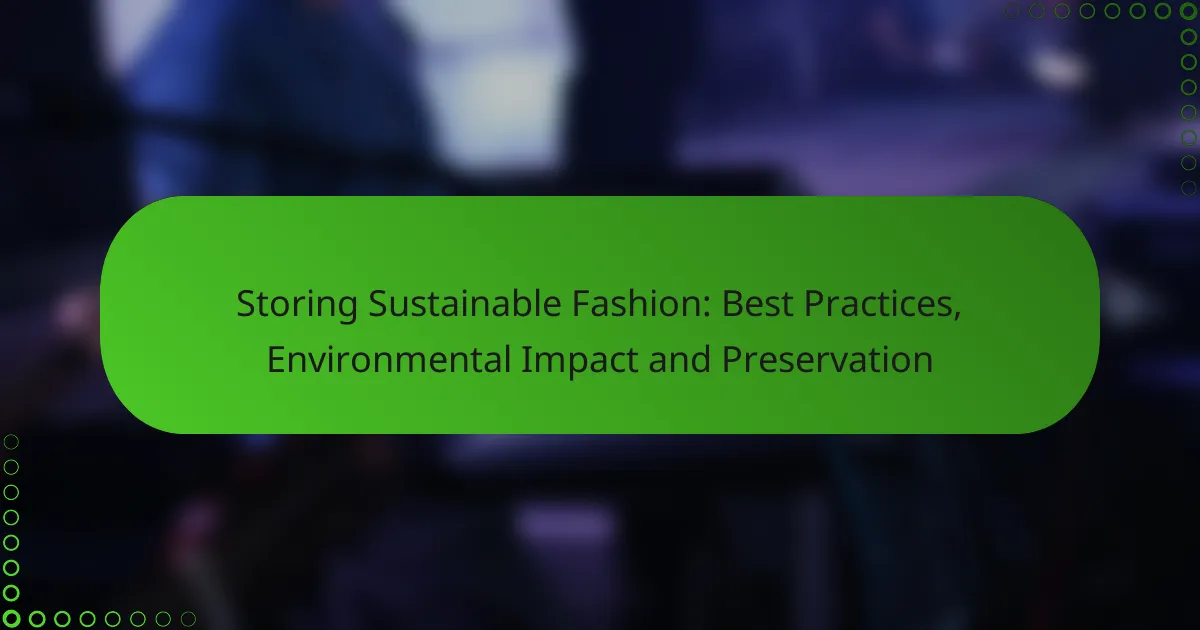Proper care and maintenance of sustainable fabrics are crucial for extending their lifespan and preserving their quality. By employing effective washing, drying, and storage techniques, as well as promptly repairing any damage, consumers can ensure that these eco-friendly materials remain both functional and visually appealing for years to come.
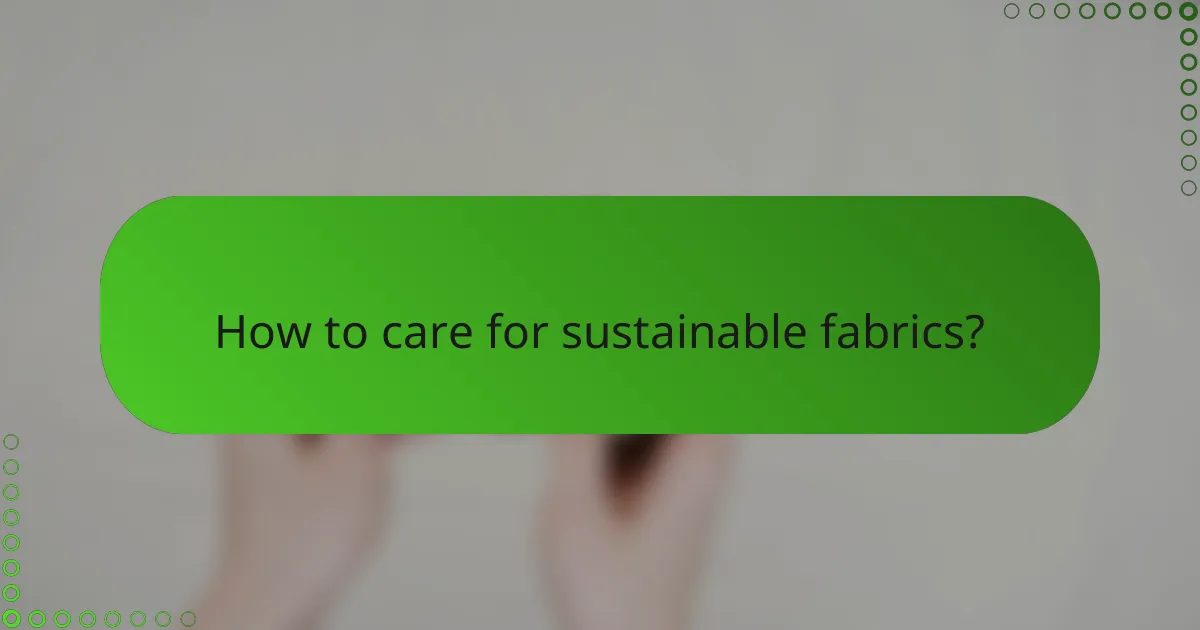
How to care for sustainable fabrics?
Caring for sustainable fabrics is essential to extend their lifespan and maintain their quality. Proper washing, drying, ironing, stain removal, and storage techniques can significantly enhance the durability of these eco-friendly materials.
Washing techniques for organic cotton
When washing organic cotton, use a gentle cycle with cold water to preserve the fabric’s natural fibers. Avoid harsh detergents; instead, opt for eco-friendly options that are free from synthetic chemicals.
It’s best to wash organic cotton items with similar colors to prevent bleeding. If possible, hand washing can further reduce wear and tear, extending the life of your garments.
Drying methods for hemp textiles
Hemp textiles should ideally be air-dried to maintain their strength and integrity. Hang them in a shaded area to prevent fading from direct sunlight.
If using a dryer, select a low heat setting to avoid shrinking. Remove the items while slightly damp to minimize wrinkles and facilitate easier ironing later.
Ironing tips for bamboo fabric
When ironing bamboo fabric, use a low to medium heat setting to prevent damage. It’s advisable to place a thin cloth between the iron and the fabric to avoid direct contact.
Ironing bamboo while it’s slightly damp can help achieve a smoother finish. Always check the care label for specific instructions, as some blends may have different requirements.
Stain removal for linen
For linen, act quickly to treat stains. Blot the stain gently with a clean cloth and cold water, avoiding vigorous rubbing that could damage the fibers.
For tougher stains, a mild soap solution can be applied. Test any stain removal method on a hidden area first to ensure it doesn’t affect the fabric’s color or texture.
Storage recommendations for recycled polyester
Store recycled polyester items in a cool, dry place to prevent moisture buildup, which can lead to mold. Use breathable garment bags or cotton storage bins to protect them from dust.
Avoid hanging heavy recycled polyester garments to prevent stretching; instead, fold them neatly. Ensure they are completely clean and dry before storage to maintain their quality over time.
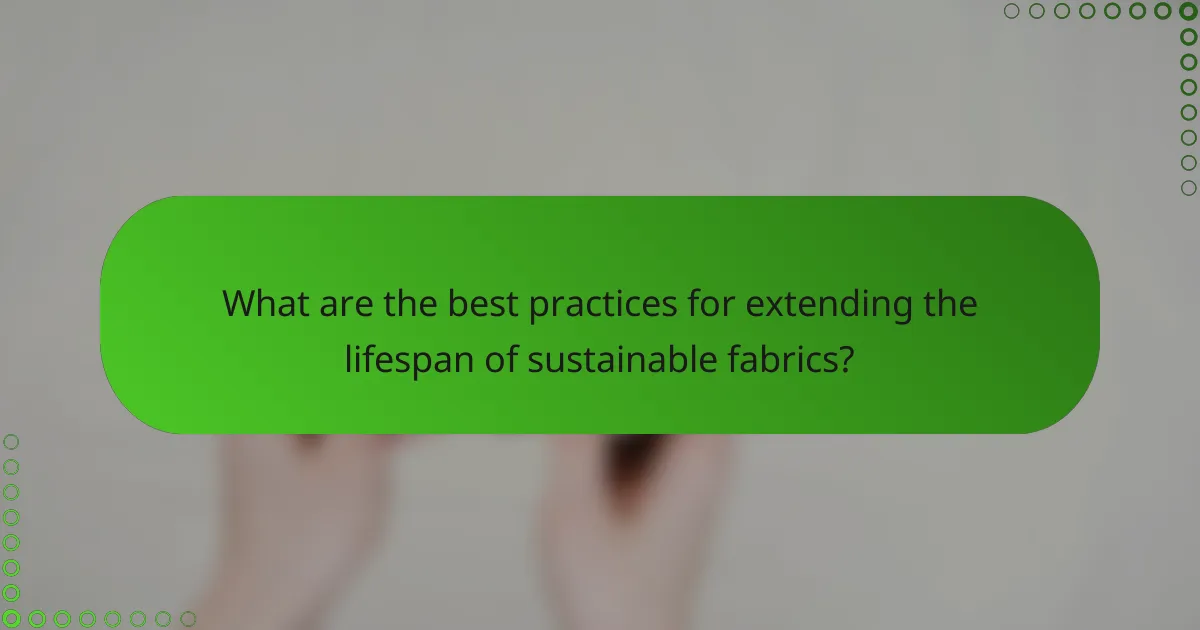
What are the best practices for extending the lifespan of sustainable fabrics?
To extend the lifespan of sustainable fabrics, implement consistent maintenance, repair damaged areas promptly, and handle materials with care during wear. These practices help preserve the integrity and appearance of eco-friendly textiles, ensuring they remain functional and aesthetically pleasing for longer periods.
Regular maintenance routines
Establishing a regular maintenance routine is crucial for sustainable fabrics. This includes washing them at appropriate temperatures, typically cold or lukewarm, to prevent shrinkage and fading. Use mild detergents that are free from harsh chemicals to protect the fibers and the environment.
Additionally, avoid frequent washing; instead, spot clean when possible to reduce wear. Air drying is preferable to machine drying, as it minimizes damage from heat and helps maintain the fabric’s structure.
Repair techniques for damaged fibers
Repairing damaged fibers promptly can significantly extend the life of sustainable fabrics. For small tears or snags, consider using a needle and thread to stitch the area, or apply a fabric patch for larger damages. Choose patches made from similar sustainable materials to maintain the eco-friendly nature of the item.
For frayed edges, a simple zigzag stitch can prevent further unraveling. If the fabric is heavily damaged, consult a professional tailor who specializes in sustainable materials to ensure the repair is done correctly.
Proper handling during wear
Proper handling of sustainable fabrics during wear can prevent unnecessary damage. Avoid activities that may cause excessive friction, such as dragging the fabric across rough surfaces. When sitting, be mindful of how the fabric interacts with the seat to avoid pilling or tearing.
Additionally, remove jewelry or accessories that could snag the fabric. If you anticipate exposure to spills or stains, consider wearing an apron or protective layer to safeguard your sustainable garments.
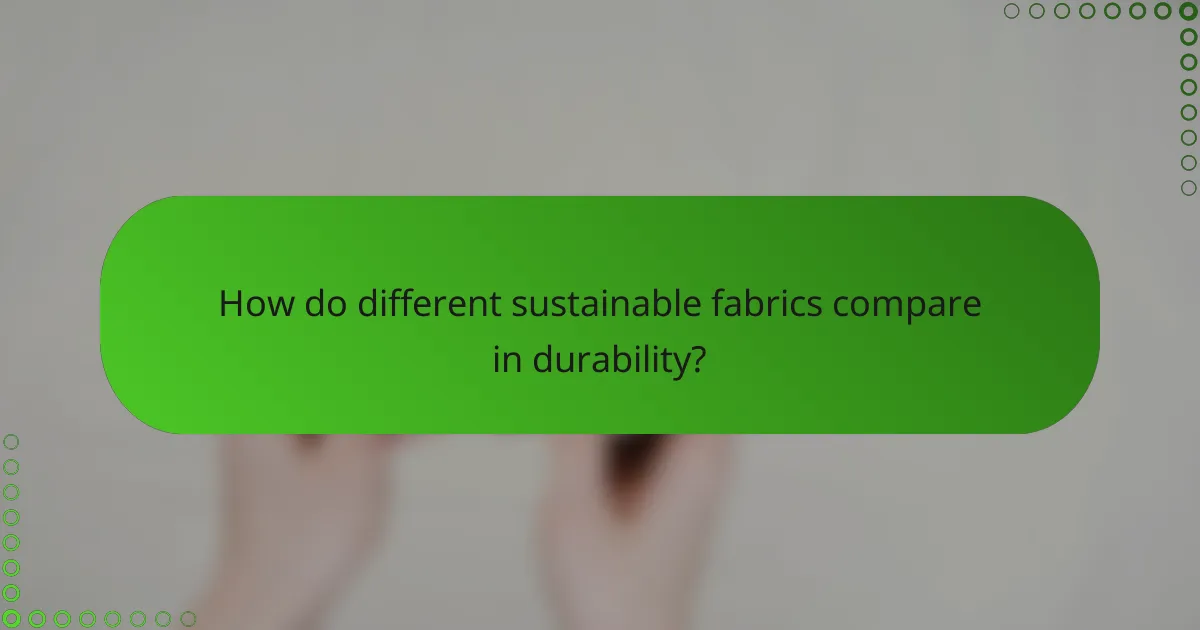
How do different sustainable fabrics compare in durability?
Different sustainable fabrics vary significantly in durability, impacting their lifespan and maintenance needs. Understanding these differences helps consumers make informed choices about which materials will best withstand wear and tear over time.
Organic cotton vs. Tencel lifespan
Organic cotton typically has a lifespan of around 2-5 years, depending on usage and care. Tencel, made from sustainably sourced wood pulp, often lasts longer, with a lifespan of 3-7 years due to its strong fibers and resistance to wrinkles and fading.
When caring for these fabrics, organic cotton requires gentle washing and air drying to maintain its integrity, while Tencel can withstand machine washing at lower temperatures. This difference in care can influence the overall longevity of each fabric.
Hemp durability compared to linen
Hemp is known for its exceptional durability, often outlasting linen by several years. Hemp fabrics can endure heavy use and are resistant to mold and UV light, making them ideal for outdoor applications.
Linen, while also strong, tends to be less durable than hemp and may show signs of wear sooner, particularly if exposed to harsh conditions. Proper care, such as gentle washing and avoiding high heat, can extend the life of both fabrics.
Recycled polyester performance metrics
Recycled polyester is highly durable, often lasting 5-10 years, depending on the specific blend and usage. It retains its shape well and resists shrinking and stretching, making it a popular choice for activewear and outdoor gear.
To maintain recycled polyester, it is best to wash in cold water and avoid fabric softeners, which can degrade the fibers over time. Regular care can significantly enhance its lifespan, ensuring that it remains functional and visually appealing for years.

What are the environmental impacts of sustainable fabric care?
Sustainable fabric care significantly influences environmental health by reducing water and energy consumption and promoting the use of biodegradable cleaning agents. These practices help minimize the ecological footprint associated with maintaining textiles.
Water usage in washing
Washing sustainable fabrics typically requires less water than conventional methods, especially when using high-efficiency machines. Aim for a load size that maximizes water efficiency, as smaller loads can waste water and energy.
To further reduce water usage, consider washing clothes in cold water and using shorter cycles. This not only conserves water but also helps preserve the integrity of the fabric over time.
Energy consumption in drying
Drying sustainable fabrics can consume a significant amount of energy, particularly with traditional dryers. To mitigate this, air drying is a more eco-friendly option that reduces energy use and prolongs the lifespan of the fabric.
If using a dryer, opt for energy-efficient models and consider using dryer balls to improve airflow and reduce drying time. This can help lower energy consumption while maintaining fabric quality.
Biodegradability of cleaning agents
The choice of cleaning agents plays a crucial role in sustainable fabric care. Opt for biodegradable detergents that break down naturally and do not contribute to water pollution. Look for products with eco-certifications to ensure they meet environmental standards.
Additionally, avoid harsh chemicals that can damage both fabrics and the environment. Simple alternatives like vinegar or baking soda can effectively clean fabrics while being gentle on the planet.
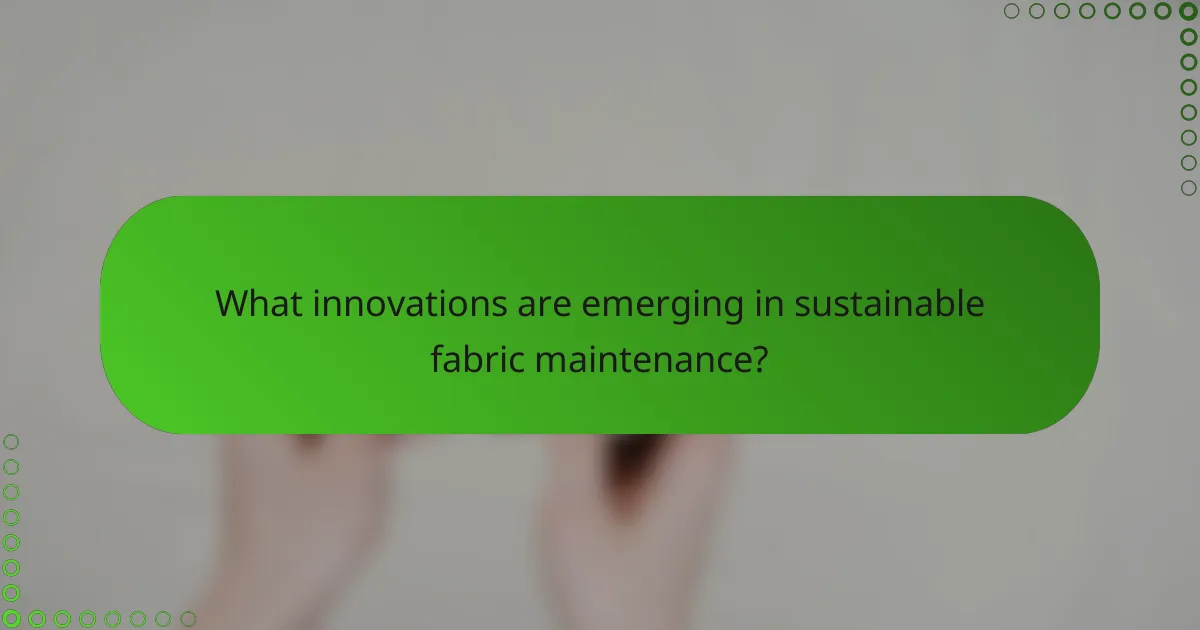
What innovations are emerging in sustainable fabric maintenance?
Emerging innovations in sustainable fabric maintenance focus on enhancing longevity and reducing environmental impact. Techniques such as waterless dyeing, biodegradable detergents, and smart textiles are becoming increasingly prevalent, offering more eco-friendly options for consumers.
Waterless dyeing technologies
Waterless dyeing technologies significantly reduce water usage in the fabric dyeing process. These methods often utilize carbon dioxide or other solvents, which can cut water consumption by up to 90%. This innovation not only conserves water but also minimizes the release of harmful chemicals into waterways.
Brands adopting waterless dyeing can market their products as more sustainable, appealing to environmentally conscious consumers. For example, companies like DyeCoo have successfully implemented this technology, showcasing its potential in the fashion industry.
Biodegradable detergents
Biodegradable detergents are designed to break down naturally without harming the environment. These detergents often contain plant-based ingredients and avoid harsh chemicals, making them safer for both fabrics and ecosystems. When choosing a detergent, look for certifications like the EPA’s Safer Choice label to ensure environmental compliance.
Using biodegradable detergents can extend the lifespan of sustainable fabrics by preventing damage from harsh chemicals. This practice not only benefits the environment but also helps maintain the quality of your garments over time.
Smart textiles and care
Smart textiles incorporate technology that can monitor and respond to fabric conditions, enhancing maintenance. These fabrics can indicate when they need cleaning or alert users to potential damage, allowing for timely care. Innovations in this area include moisture-wicking materials that reduce odor and dirt accumulation.
Investing in smart textiles can lead to lower maintenance costs and longer-lasting garments. As this technology advances, it may become more accessible, providing consumers with practical solutions for sustainable fabric care.




